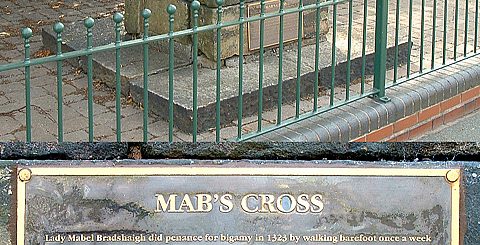Okiku’s Well
The haunting of Okiku’s Well at Himeji Castle is one of Japans most famous ghost stories and known as Nanshu Sara-Yashiki. However, over time the story has changed somewhat and even the location of the Well itself has been questioned.
 Himeji Castle is a World Heritage Site and is considered to be the best preserved surviving castle in Japan. One of the reasons it has survived so well is that it has apparently never been besieged or attacked. The castle which was originally called Shirasagi-Jo is in Himeji city and was built by Norimura Akamatsu in 1346. Since then, as with all long lasting fortifications, it has been modified depending upon the needs of its current Lord. Amongst those to have modified the castle are the famous Toyotomo Hideyoshi during the Warring States Period and the Shogun Tokugawa Ieyasu (January 31, 1543 – June 1, 1616). The castle complex, as it survives today, was completed in 1609.
Himeji Castle is a World Heritage Site and is considered to be the best preserved surviving castle in Japan. One of the reasons it has survived so well is that it has apparently never been besieged or attacked. The castle which was originally called Shirasagi-Jo is in Himeji city and was built by Norimura Akamatsu in 1346. Since then, as with all long lasting fortifications, it has been modified depending upon the needs of its current Lord. Amongst those to have modified the castle are the famous Toyotomo Hideyoshi during the Warring States Period and the Shogun Tokugawa Ieyasu (January 31, 1543 – June 1, 1616). The castle complex, as it survives today, was completed in 1609.
Plaster was applied to many of the wooden walls of the castle to give it a white clean appearance and also to make it fire proof. There is a major five storied donjon that was the Daimyo’s (lord) residence and there are three smaller ones used by troops and for storage. Okiku’s Well is near the donjon and the Suicide Gate (Hara-kiri maru) where ritual disembowelment was forced.
The Tale of Okiku
There are various versions of the events leading up to the death of Okiku and her subsequent haunting of the well. Each version involves a set of ten plates or dishes and ends with the ghost of Okiku being heard counting them after one goes missing. The kabuki play Bancho Sarayashiki has Okiku a maid in the home of the samurai Tessan Aoyama. Aoyama wishes to make Okiku his mistress and attempts to seduce her, only to be rejected by the young woman. In order to try and force her into his bed he decides to frame her by hiding one of ten valuable Dutch made plates then informing her that he will openly accuse her of the theft unless she agrees to be his mistress. Caught in a desperate situation, Okiku dives into the well where she drowns herself, rather than be forced to sleep with the samurai. Her ghost would appear each night, coming up out the well, counting 1-9. When she reached nine she would begin howling and crying before she vanished for another day. The haunting drove the samurai insane.
Another version has Okiku overhearing a plot to overthrow her lord by his Chief Retainer. Okiku stops the plot by informing her lover. The Chief Retainer seeks vengeance by stealing an important plate or dish from a set of ten and accusing Okiku. Enraged the lord has Okiku thrown down the well as a form of execution. Again she can be heard counting to nine and screaming so much that the master was driven insane.
One account has Aoyama’s wife accidently breaking one of the ten plates and throwing it in the well to hide it. When the plate is found to be missing, the mistress accuses Okiku who is executed by Aoyama by being thrown down the well.
Inevitably there is a version that has Okiku breaking the plate and being thrown down the well for her actual crime.
To confuse matters more, the Canadian embassy in Tokyo’s garden could also be considered as the location of Okiku’s Well.
The origins of the story are unknown, but it does date back as far as 1741 at least, when it was performed in the Toyotakeza theater, entitled Bancho Sarayashiki.





















The Keshoyagura Turret in
The Keshoyagura Turret in Himeji Castle is where Princess Senhime lived. She had quite a colourful life. At the age of six she was married to Toyotomi Hideyori. He was forced to commit suicide after being defeated in battle and Senhime was a widow by the age of 19 years. When Osaka castle was besieged and set on fire her grandfather promised her hand in marriage to the man who saved her. Lord Sakazaki risked his life to get her out safely, but Senhime was then married to another man called Tadatoki Honda. Sakazaki was enraged and plan to steal Senhime away, by force if necessary. It is probably at this time she moved to Himeji Castle. Sakazaki was forced to commit suicide.